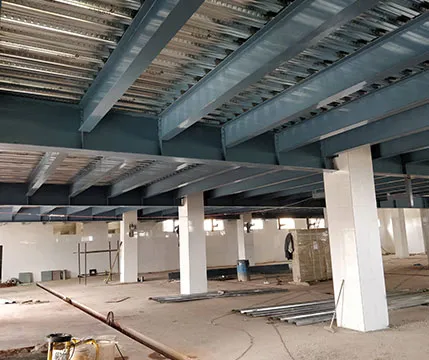- Afrikaans
- Albanian
- Amharic
- Arabic
- Armenian
- Azerbaijani
- Basque
- Belarusian
- Bengali
- Bosnian
- Bulgarian
- Catalan
- Cebuano
- Corsican
- Croatian
- Czech
- Danish
- Dutch
- English
- Esperanto
- Estonian
- Finnish
- French
- Frisian
- Galician
- Georgian
- German
- Greek
- Gujarati
- Haitian Creole
- hausa
- hawaiian
- Hebrew
- Hindi
- Miao
- Hungarian
- Icelandic
- igbo
- Indonesian
- irish
- Italian
- Japanese
- Javanese
- Kannada
- kazakh
- Khmer
- Rwandese
- Korean
- Kurdish
- Kyrgyz
- Lao
- Latin
- Latvian
- Lithuanian
- Luxembourgish
- Macedonian
- Malgashi
- Malay
- Malayalam
- Maltese
- Maori
- Marathi
- Mongolian
- Myanmar
- Nepali
- Norwegian
- Norwegian
- Occitan
- Pashto
- Persian
- Polish
- Portuguese
- Punjabi
- Romanian
- Russian
- Samoan
- Scottish Gaelic
- Serbian
- Sesotho
- Shona
- Sindhi
- Sinhala
- Slovak
- Slovenian
- Somali
- Spanish
- Sundanese
- Swahili
- Swedish
- Tagalog
- Tajik
- Tamil
- Tatar
- Telugu
- Thai
- Turkish
- Turkmen
- Ukrainian
- Urdu
- Uighur
- Uzbek
- Vietnamese
- Welsh
- Bantu
- Yiddish
- Yoruba
- Zulu
Dec . 01, 2024 09:17 Back to list
Small Livestock Buildings Essential Structures for Compact Farming
As the agricultural landscape continues to evolve, small livestock buildings have become increasingly important for both hobbyists and small-scale farmers. These structures are designed to provide shelter, comfort, and efficiency for various types of small livestock such as chickens, goats, sheep, rabbits, and pigs. With the growing interest in sustainable and local farming, understanding the requirements and benefits of small livestock buildings is crucial for those looking to engage in compact farming practices.
The Necessity of Small Livestock Buildings
Small livestock buildings serve a multifunctional purpose. They protect animals from harsh weather conditions, pests, and predators, ensuring the animals' health and productivity. Furthermore, these buildings play a significant role in the management of waste, which is vital for maintaining a clean environment. Proper shelter can help maintain adequate temperature levels, reducing stress on animals and promoting better growth and output, such as egg production or milk yield.
Design Considerations
When planning the construction of a small livestock building, several key design considerations should be taken into account. First and foremost, space allocation is critical. Each species has specific space requirements; for instance, chickens need about 3 to 4 square feet per bird, while goats require a minimum of 15 to 20 square feet per animal. The building should also include separate areas for feeding, resting, and potentially breeding to accommodate the animals' diverse needs.
Ventilation is another important aspect. Proper airflow within the building helps regulate humidity and temperature, which can prevent the buildup of harmful ammonia and reduce the risk of respiratory diseases. Natural ventilation systems using windows, vents, and eaves can often suffice, but in more extreme climates, mechanical systems may be necessary.
The choice of materials also impacts the building's functionality and longevity. Materials should be weather-resistant, easy to clean, and durable. Common choices include treated wood, metal siding, and concrete for flooring. Furthermore, insulation may be necessary in colder regions to ensure a comfortable environment for the livestock.
small livestock buildings

Key Features of Small Livestock Buildings
Aside from basic shelter, several features can enhance the functionality and effectiveness of small livestock buildings. Consider incorporating nesting boxes for chickens, feeders, and water systems that reduce waste and ensure animals have constant access to food and hydration. Additionally, having a designated area for milking goats or sheep can streamline the process and improve hygiene.
Lighting plays a significant role in animal behavior and productivity. Natural light is ideal, but supplemental electric lighting may be necessary during shorter days to promote consistent laying among hens or to encourage breeding cycles in other species.
Sustainability and Efficiency
Small livestock buildings can be designed with sustainability in mind. Incorporating solar panels can provide a renewable energy source to power lights and heated water systems. Rainwater collection systems can also be utilized to provide water for livestock while reducing overall utility costs.
Efficient waste management is another component of a sustainable livestock operation. Implementing composting systems within the building can transform manure into valuable fertilizer for crop production. This closed-loop approach not only benefits crop health but also minimizes the impact of livestock on the environment.
Conclusion
In conclusion, small livestock buildings are indispensable for anyone involved in compact farming. They provide a safe and efficient environment for animals while promoting sustainable practices. As the interest in local food systems and small-scale farming continues to grow, investing in well-designed livestock buildings can lead to healthier animals, increased production, and enhanced satisfaction for farmers. Understanding the design considerations, key features, and sustainable practices associated with small livestock buildings is essential for anyone looking to thrive in this rewarding endeavor.
-
How Do Prefabricated Steel Structures Transform Modern Construction?
NewsJul.14,2025
-
How Do Prefabricated Metal Buildings Redefine Modern Construction?
NewsJul.14,2025
-
How Do Prefab Insulated Metal Buildings and Steel Structures Revolutionize Modern Construction?
NewsJul.14,2025
-
How Do Pre - Engineered Steel Structures Redefine Modern Construction?
NewsJul.14,2025
-
Advancing Modular Construction with Prefabricated Metal Structures
NewsJul.14,2025
-
Advancing Industrial Infrastructure with Prefabricated Steel Solutions
NewsJul.14,2025
Products categories
Our Latest News
We have a professional design team and an excellent production and construction team.












